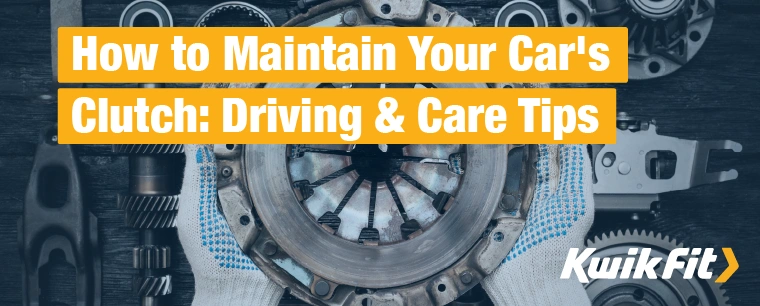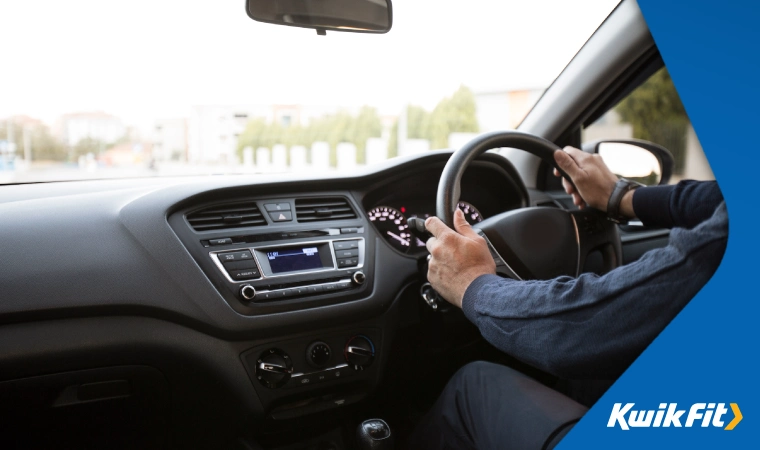How to Maintain Your Car's Clutch: Driving & Care Tips
Jack Dreyer | Monday 11th December 2023 12:00pm

Unless you drive an automatic (and even some older automatic models still suffer), a clutch replacement often results in a sudden need for a heart replacement. Itís a lot of work to replace a failed clutch because you have to essentially remove everything from the engine bay to get to the clutch Ė so this isnít news anybody wants to hear.
Clutches, by the nature of how they work, actually take quite a beating Ė so itís natural for them to wear over time. But there are a few driving habits that dramatically increase clutch wear. Hereís how to maintain your carís clutch for as long as possible.
A quick overview of how clutches work
Before we look at ways to be kind to our clutches, letís quickly make sure we understand how they work.
When your engine is running, it produces a lot of rotational power. In theory (and the earliest engines did work like this), you could just connect some wheels to the engine and get going. But this comes with many limitations.
Firstly, your maximum speed would be really limited and, secondly, youíd always be in ďgoĒ mode. That is, the only way to stop would be to either turn the engine off or press the brakes down Ė this is a really inefficient way of making a car!
So in comes the clutch.
Weíre simplifying here but a carís clutch, in short, acts almost like a brake disc that exists to let you change gears efficiently. If youíve ever cycled a bicycle downhill, youíve probably found that, at a certain point, youíre going faster than you can pedal. By changing gears, youíre able to effectively pedal faster and put your foot-power into pedal-power (not scientific terms).
The same principle applies for cars. The engine provides spinning power from one side and the wheels spin as the car moves on the ground.
The clutch connects both of these parts and spins. And the clutch itself is made up of two plates that are held together by friction. When you press down on your clutch pedal, the two halves of the clutch are lifted from each other Ė so no power gets transmitted from the engine (and you end up coasting). Itís the removal of power that makes you able to change gears without wrecking either the gearbox or the engine!
Over time, however, the friction plates on the clutch wear down and itís not able to hold together properly. At this point, it becomes difficult to change gears and the power transmitted to the drive shaft becomes reduced Ė so what can you do to stop that? How can you look after your carís clutch in the long run?
1.) Donít overuse your biting point
When stopped at junctions, at traffic lights, or in traffic, try to keep your car in neutral and rely primarily on your brakes and handbrake to keep your car from rolling back. Itís a habit many people pick up to hold onto the biting point when in stop-start traffic or at junctions.
This is definitely a skill worth learning for those times when you need to be ready to zip out, but partially engaging the clutch to hold you steady puts a lot of strain on the clutch Ė after all, itís having to hold the whole weight of the car without being fully connected.
2.) Donít ride the clutch
ďRiding the clutchĒ is when a driver keeps their foot on the clutch pedal when itís not needed. Even if you donít think you are, keeping your foot on the pedal causes it to slightly press down at times and release the clutch plates from each other. This typically doesnít release them enough that you coast, but releases them enough that they start to slip and wear against each other.
This is actually the fastest way to wear a clutch (other than the next tip)!
3.) Avoid jolting the engine with down-shifting
When shifting down in gears, you need to do so by matching the revs of the engine to whatís suitable for that gear. If the engine is over-revving for the gear when you shift into it, the lower gear will cause sudden engine braking that jolts the car. This also puts a lot of strain on the clutch because itís having to match the spinning rate of two parts Ė and this requires a lot of friction.
Imagine two spaceships trying to dock with each other Ė if theyíre spinning at different rates then they canít get their doors to line up!
Jolting the engine during down-shifting also creates knock-on effects for other components like your brakes, suspension, and engine mounts. Suddenly, everything gets a sudden shock and, in some cases, this can cause components to crack.

4.) Shift gears smoothly & quickly
The same thing applies with the gear stick. Make sure that the clutch pedal is fully depressed before shifting gears, shift the gear quickly, and avoid forcing the gear stick if it doesnít want to go into a gear. This reduces wear on the gearbox and gear stick Ė both of which are similarly troublesome to replace.
This, along with the previous tip, is especially important to remember when shifting into first gear! In order to protect the engine, clutch, and gearbox, most modern gearboxes have a component that blocks you from moving into first gear if the carís moving too fast. If you force this, then the component could break Ė which could have devastating effects for other components.
5.) Opt for regular clutch maintenance
Over time, your carís clutch can develop a high biting point. This is sometimes easily fixed by adjusting a tension bolt on the clutch, but can be an indicator of a wearing clutch and can in fact cause further wear if left loose. This is because you get a similar effect to what we described earlier with riding the clutch but almost all the time.
Making sure you get your car regularly checked & serviced by the experts at your local Kwik Fit centre is the best way to maintain all the components.
Any facts, figures and prices shown in our blog articles are correct at time of publication.
Featured Articles
Is it Illegal to Drive With One Headlight?
Saturday 19th July 2025
Wondering if itís illegal to drive with one headlight? Learn about the safety risks and penalties of illegal blown bulbs and why you should fix them promptly.
Air Con in EVs & Hybrids: Experts Answer Your Questions
Monday 30th June 2025
Does air con drain EV batteries? Can you use the air con while charging an electric car? Find out the answers to these questions & more from Kwik Fitís experts.
Why Is Your Car Making a Noise? Fixes & Tips
Friday 13th June 2025
When your car starts making unexpected noises, it can certainly be quite disconcerting; it may be nothing to worry about, but hereís what you need to know.









